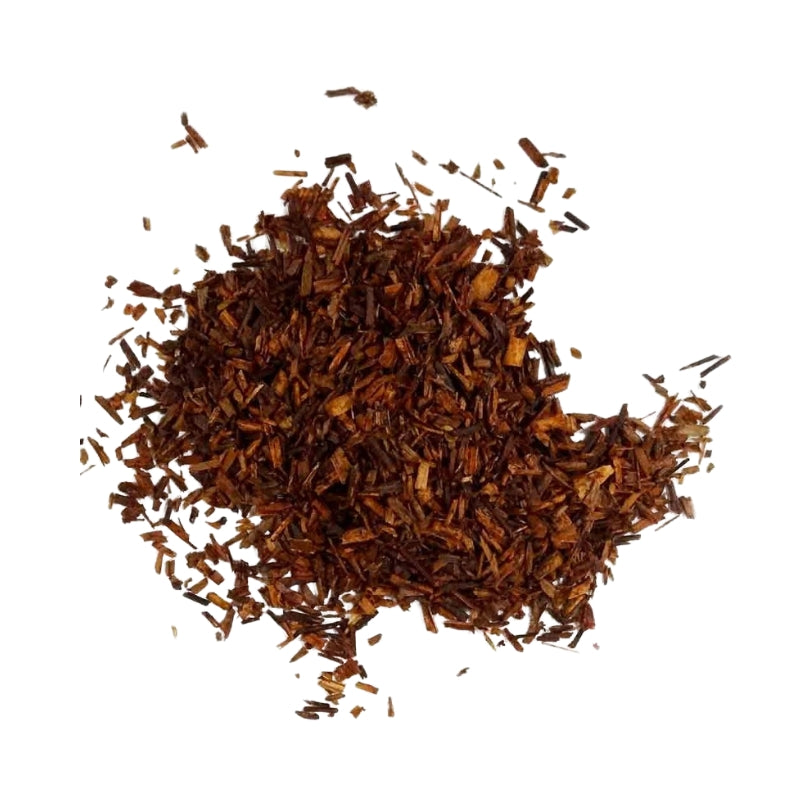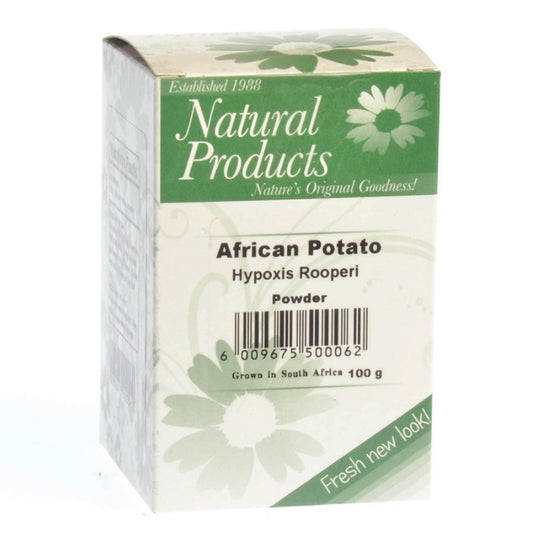
Proudly South African: Healing Rooibos Tea
Cayla MandeanIf you're South African, you've probably come across rooibos at some point.
From your grandparents drinking it on the stoep, to your mother brewing a pot for unexpected house guests, rooibos is more than just a tea. It holds some of our most precious memories.
I'll never forget how both my grandfathers, on opposite sides of the family, who had never met each other before my parents married, shared one strangely similar habit. Each time I proudly made them a cup of rooibos as a child, they would do the same thing… pour the steaming tea from the mug onto a saucer or a plate, then carefully sip it from the edge.
I used to sit at the kitchen table, utterly fascinated. One lived in Upington, the other in Cape Town. They were as different as their landscapes-one quiet but who carried so much authority and love, the other always telling encouraging stories and compelled you to live boldly-but somehow, they both drank rooibos the same "old-fashioned" way.
I didn't understand it at the time, but it felt like a secret ritual passed through generations, like rooibos had stitched something into our family that went deeper than blood.
To this day, every time I drink rooibos tea, that taste and scent take me right back to that moment of realisation.
And now that it is winter, rooibos is even more powerful. It's no longer just a connection to family, heritage or nostalgia. It becomes a cure, a comfort, a quiet warmth when the nights are long and your nose won't stop running.
Where Does Rooibos Tea Come From?
Did you know that historical accounts of rooibos began over 300 years ago, noting it as being used by the Khoisan people, indigenous to South Africa? Fascinating, right?
As a child, you probably didn't think twice about it. It was just "that red tea." But dig a little deeper and you'll find that rooibos has one of the richest stories in the world of tea.
Rooibos (pronounced roy-boss) means "red bush" in Afrikaans. It is derived from Aspalathus linearis, a fynbos species found in the Western and Northern Cape in South Africa.
Rooibos begins its journey in the veld (fields), where farmers carefully harvest the needle-like leaves and stems. These are then bruised and heaped into piles to ferment. This process helps unlock the tea's signature deep red hue and earthy flavour. Once fermented, the leaves are spread out and sun-dried under our warm African sun.
Traditionally, rooibos is enjoyed in its oxidised, red-brown form, but there's also a green, unfermented variety that offers a milder taste. Both are naturally caffeine-free, rich in antioxidants, and known for their abundant phenolic profiles. They've been linked to various health benefits, from anti-inflammatory properties to heart health support.
The rooibos industry is also guided by strict regulations that ensure sustainable farming practices, fair trade, and ethical labour standards. This serves to help protect the local ecosystem and workers, but also to preserve the integrity of one of South Africa's most treasured natural products.
The Health Benefits of Rooibos Tea
Rooibos is caffeine-free, which means it is perfect for late-night reading sessions or post-dinner chats without disrupting your sleep. But truly, it is so much more.
Internally, rooibos can support:
- Immune and overall support. Rooibos is rich in polyphenols, and studies suggest these powerful antioxidants have the potential to help protect the body from aging, inflammation, heart disease, and even cancer. You can think of it as a gentle support that builds resilience over time.
- Heart health. Studies show rooibos may help lower "bad" LDL cholesterol and support heart health.
- Stress relief. Have you ever noticed how rooibos helps you unwind? That's thanks to compounds like aspalathin and nothofagin, which lower the body's stress hormone, cortisol.
- Blood sugar balance. Aspalathin in rooibos may help balance blood sugar and improve insulin sensitivity, offering support for managing or even preventing type 2 diabetes.
- Digestive comfort: It is gentle on the gut and may help support gut health as its prebiotic potential has been noted over the years. No wonder some kombucha varieties contain rooibos.
*Note that research regarding Rooibos and its associated health benefits is still ongoing.
Externally, rooibos is an amazing ingredient in skincare too! Due to its anti-inflammatory and antioxidant properties, rooibos helps heal skin irritations like dryness, eczema, and sunburn. It also supports collagen and cell repair. Many natural skincare brands use rooibos extract in winter creams and balms to help dry, irritated skin recover from the cold. (Keep reading… we have a DIY recipe you don't want to miss trying!)
Tea Bags vs. Loose Leaf Rooibos Tea: Does It Matter?
In short? Yes, it does. And here's why.
Most commercial tea bags contain what's called dust and fannings, finely broken tea leaves or tea particles. While this allows for quicker brewing, they are pre-portioned and generally provide a lower-quality tea-drinking experience compared to loose tea.
Loose leaf rooibos, on the other hand, consists of larger, more intact pieces of the plant. So when you brew rooibos loose-leaf, you'll notice a deeper colour, richer aroma, and a fuller, more nuanced flavour. This is because the volatile oils and aromatic compounds that contribute to rooibos's distinctive taste are better preserved in a loose-leaf form.
The antioxidants in rooibos degrade over time with light, heat, and air exposure, all of which affect the smaller particles in bagged tea more severely. As a result, loose leaf tea offers a higher concentration of active compounds and degrades at a slower rate, making it a better choice for those drinking rooibos for its health and wellness benefits.
There's another reason to go loose: sustainability and health.
Many commercial tea bags are made with synthetic materials such as nylon, which release microplastics when steeped in hot water. While the long-term health implications are still being studied, it has been found that a single plastic tea bag can release billions of microplastic particles into a single cup.
While there is an encouraging trend toward safer, plastic-free tea bag alternatives, loose-leaf rooibos simply avoids all of that. It's just the plant in your cup, as nature intended. And once you've brewed your cup, the leaves can go straight into the compost, returning to the earth without waste.
Want some DIY inspiration?
Brew It Your Way (DIY Recipes for Winter)
Warming, Immune Boosting, Rooibos Tea Blend:
Helps support the immune system and provides a delicious but relaxing winter beverage.
Ingredients:
2 tsp loose-leaf Rooibos
2 Cloves
½ tsp Ginger Powder
1 tsp Echinacea
1 tsp Elderberry
1 tsp Honey (or more to taste)
Optional: a slice of orange or lemon
500ml Filtered Water
Method:
- Simmer the herbs (except honey and citrus) gently for 10-15 minutes to allow full extraction.
- Add honey after removing from the heat to preserve its beneficial properties.
- Add citrus at the end or as a garnish for the freshest flavour and to avoid bitterness.
- This batch makes about 2 servings.
Easy, Winter Glow Rooibos DIY Face Mist
Helps brighten the skin, reduce inflammation and promote skin regeneration.
Ingredients:
2 tbsp loose-leaf Rooibos
1 cup boiled and slightly cooled filtered water
3ml Geogard 221
Filter paper or other fine strainer
Method:
- Mix the water and rooibos together.
- Leave it to infuse for at least one hour, but it can be left longer, stirring occasionally.
- Once you are happy with the strength of your infusion, strain thoroughly and blend in the preservative.
- Add it to a spritzer bottle and apply directly on your skin as a toner, before you apply your moisturiser.
















2 comments
Hi there,
Thank you for your kind and encouraging words, Anthea! It truly means the world to know that my articles are helpful and easy to follow – that’s exactly what I am to do🥰
At Essentially Natural, we are all passionate about sharing practical, accessible information that empowers you to live more naturally, and it is incredibly rewarding to hear that it is resonating with you.
If there is a topic you’d love to see covered or explored further, please feel free to let us know. 🌸
Kind regards,
Cayla
I love your articles Kayla.It is very informative and simple to achieve.Keep on with the information.Good work